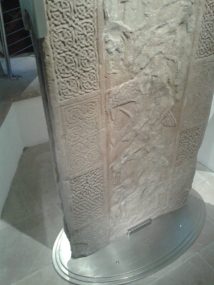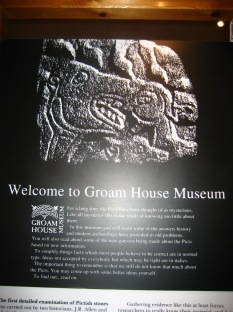I’ve spent the past six years studying how eighteenth- and early nineteenth-century writers wrote the music history of Scotland. Some well-known figures who made contributions to the writing of music history include the poet Allan Ramsay, the novelist Sir Walter Scott, and the American writer and politician Benjamin Franklin. These writers had very few musical sources which could be securely dated to earlier than the seventeenth century, and so my conclusion was that the music history these gentlemen wrote was primarily a product of wider eighteenth- and nineteenth-century ways of thinking about historical progress and their perceptions of Scottish historical events (less brief version available here).
Studying historiography (how history is written) is unfortunately the fast track to an extreme philosophical conundrum: I am forced to acknowledge that the history of history that I write is as equally a product of my experiences and wider environment as the histories written by the eighteenth-century gentlemen I study. What then, you might ask, is the point in this apparently arcane task?
Today I’d like to share my latest thoughts on the importance of studying historiography as crystallised by my recent encounters with Stuart McHardy’s book A New History of the Picts (Luath Press, 2011) and the online ‘AskHistorians’ subreddit.
A New History of the Picts
A New History of the Picts was a Christmas present from my dad. I should perhaps have approached it with more caution since my dad did present it to me with the words: “This is going to make you really angry, here’s Beowulf to cheer you up afterwards”. How right he was! The author of A New History of the Picts built conjecture upon conjecture as if they were facts, and he frequently drew parallels over more than 1000 years of history without supporting evidence from the intervening period. I was angry because he showed such a cavalier disregard for the methods of assessing evidence that historians attempt to adhere to in a book which presented history to a general readership.
AskHistorians
I stumbled across the ‘AskHistorians’ subreddit having googled “ask a historian” after encountering the excellent ‘Ask a Scientist’ website. ‘AskHistorians’ is an online community in which registered users can ask questions about history and other users can answer them. Users can vote on the quality of posts, with posters earning “karma” as a mark of community-judged esteem. Users who have particular expertise can be nominated to become “flaired” users provided they can demonstrate to the moderators that they have provided at least three high-quality answers. The guidelines of the community stress the need for well-referenced and nuanced answers “assessed against the standards of Historiography and Historical Method”. I was initially excited by the prospect of the website, but ultimately I was disappointed. Curiously enough, my disappointment stemmed not from the content, but from the lack of users who used their real name to post. Was I becoming an academic snob? I thought not, rather the lack of names bothered me because it inhibited my ability to properly judge the users’ answers as I would judge other sources I use in historical work: how could I make a judgement about their possible biases, for example, if I didn’t know who they were?
So why study the history of history?
Despite their differences, A New History of the Picts and ‘AskHistorians’ both bothered me immensely because I felt they undermined good historical method. McHardy’s book had acquired an aura of authority through being published, and yet many of his conclusions seemed to be driven by a desire to pursue his personal agenda of presenting a glorious Scottish Pictish past heroically resistant to colonising forces. Had his book been presented as a manifesto for understanding Scotland in the present this would have been more acceptable, but it wasn’t. ‘AskHistorians’ seemed more promising with its emphasis on referencing and nuanced historical debate, yet by remaining anonymous the authors undermine the importance historians give to considering who made a source and how this might have had an impact on the nature of the source.
Studies of how history is written, like mine, have value beyond their academic disciplinary boundaries by drawing attention to the way in which history is inevitably a product of its time, place and the circumstances of its writers, and so highlighting the need to approach the work of all historians with the same critical methods with which historians are taught to approach the documents and artefacts that they use to understand the past.
In Scotland in 2014 the past is constantly being co-opted and reworked in the service of the present debates about independence. In contexts such as this, understanding that history is socially constructed by human beings, and being able to critically recognise that construction, is not only important for history as an academic discipline, it is also vitally important for good citizenship.
But I am a human being with an agenda to pursue, so please don’t just take my word for it!


